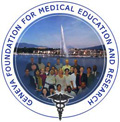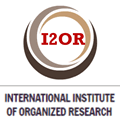Chromosomal abnormalities and congenital defects associated with omphalocele
Keywords:
omphalocele, prevalence, prenatal diagnosis, congenital abnormalities, chromosome aberrationsAbstract
Introduction: omphalocele is one of the most frequent defects of anterior abdominal wall.Objectives: to determine the adjusted prevalence rate and to describe the effectiveness of prenatal diagnostic methods, chromosomal abnormalities and congenital defects most frequently associated with omphalocele.
Methods: a retrospective descriptive observational study was carried out in Villa Clara Province between January 2010 and December 2019. Data were obtained from the Cuban registry of congenital malformations. The universe was constituted by the 26 cases diagnosed pre or postnatally with omphalocele. The reference population was 75 397 live newborns and 448 stillbirths during the period.
Results: the adjusted prevalence rate was 3.4 per 10 000 births. Prenatal diagnosis was made in 96% of cases, the sensitivity of maternal serum alpha fetoprotein determination was 13.8%, while prenatal ultrasound had a sensitivity of 96%. In 12 of the 26 cases with omphalocele (46%) some other associated major congenital defect was found, the most frequently identified were musculoskeletal (31.8%) and cardiovascular (22.7%).
Conclusions: the adjusted prevalence observed was slightly higher than that reported in the literature, which could be due to the inclusion of all cases resulting from gestational interruptions. Ultrasound was the most effective method of prenatal diagnosis. Musculoskeletal and cardiovascular defects were the most frequently associated, especially in cases with chromosomal aneuploidy.
Downloads
References
1.Barboza-Argüello MP, Benavides-Lara A. Prevalencia al nacimiento de gastrosquisis y onfalocele en Costa Rica. Acta Méd Costarric [Internet]. 2018 [citado 23/01/2021];60(1):35-41. Disponible en: https://www.scielo.sa.cr/scielo.php?script=sci_arttext&pid=S0001-60022018000100035
2.Anyanwu LC, Ade-Ajayi N, Rolle U. Major abdominal wall defects in the low- and middle-income setting: current status and priorities. Pediatr Surg Int [Internet]. 2020 [citado 23/01/2021];36(5):579–590. Disponible en: https://www.ncbi.nlm.nih.gov/pmc/articles/PMC7165143/. https://dx.doi.org/10.1007/s00383-020-04638-8
3.Ortegón López AJ, Acevedo Gallegos S, Gallardo Gaona JM, Velázquez Torres B, Ramírez Calvo JA, Camarena Cabrera D, et al. Diagnóstico y seguimiento prenatal de pacientes con onfalocele. Ginecol Obstet Mex [Internet]. 2020 [citado 23/01/2021];88(11):756-766. Disponible en: https://www.medigraphic.com/pdfs/ginobsmex/gom-2020/gom2011e.pdf. https://doi.org/10.24245/gom.v88i11.4177
4.Organización Panamericana de la Salud. Clasificación estadística internacional de enfermedades y problemas relacionados con la salud. 10ma Revisión. Edición de 2018 [Internet]. Washington DC: OPS; 2018 [citado 23/01/2021]. Disponible en: https://iris.paho.org/bitstream/handle/10665.2/6282/Volume1.pdf
5.Bidondo MP, Groisman B, Gili JA, Liascovich R, Barbero P, Pingray V. Estudio de prevalencia y letalidad neonatal en pacientes con anomalías congénitas seleccionadas con datos del Registro Nacional de Anomalías Congénitas de Argentina. Arch Argent Pediatr [Internet]. 2015 [citado 23/01/2021];113(4):295-302. Disponible en: http://www.scielo.org.ar/pdf/aap/v113n4/v113n4a04.pdf. http://dx.doi.org/10.5546/aap.2015.295
6.del Río Romero L, Blanco Figueredo N, Rodríguez Domínguez Z. Diagnóstico prenatal de onfalocele mediante ultrasonografía. Rev Cubana Obstet Ginecol [Internet]. 2014 [citado 23/01/2021];40(2):265-271. Disponible en: http://scielo.sld.cu/scielo.php?script=sci_arttext&pid=S0138-600X2014000200013
7.Durán P, Liascovich R, Barbero P, Bidondo MP, Groisman B, Serruya S, et al. Sistemas de vigilancia de anomalías congénitas en América Latina y el Caribe: presente y futuro. Rev Panam Salud Pública [Internet]. 2019 [citado 29/12/2020];43:e44. Disponible en: https://iris.paho.org/handle/10665.2/50989. https://doi.org/10.26633/RPSP.2019.44
8.Organización Panamericana de la Salud, Banco Mundial. Presente y futuro de la vigilancia de defectos congénitos en las Américas. Washington, D.C.: OPS, Banco Mundial; 2020 [citado 23/01/2021]. Disponible en: https://iris.paho.org/handle/10665.2/51964. https://doi.org/10.37774/9789275321928
9.Taboada Lugo N, Martínez Herrera M, Hernández González G, Ledesma Hernández H. Geospatial and temporal clustering of folic acid-sensitive congenital defects in Villa Clara province, Cuba. Biomed J Sci Technol Res [Internet]. 2020 [citado 23/01/2021];29(5):22818-22826. Disponible en: https://biomedres.us/fulltexts/BJSTR.MS.ID.004865.php. https://doi.org/10.26717/BJSTR.2020.29.004865
10.Asociación Médica Mundial. Declaración de Helsinki de la AMM- Principios éticos para las investigaciones médicas en seres humanos [Internet]. Ferney Voltaire: AMM; 2017 [citado 23/01/2021]. Disponible en: https://www.wma.net/es/policies-post/declaracion-de-helsinki-de-la-amm-principios-eticos-para-las-investigaciones-medicas-en-seres-humanos/
11.Marshall J, Salemi JL, Tanner JP, Ramakrishnan R, Feldkamp ML, Marengo LK, et al. Prevalence, correlates, and outcomes of Omphalocele in the United States, 1995–2005. Obstet Gynecol [Internet]. 2015 [citado 23/01/2021];126(2):284–293. Disponible en: https://pubmed.ncbi.nlm.nih.gov/26241416/. https://doi.org/10.1097/AOG.0000000000000920
12.Grover R, Collins AL, Wellesley D. Exomphalos without other prenatally detected anomalies: Perinatal outcomes from 22 years of population-based data. Prenat Diagn [Internet]. 2020 [citado 23/01/2021];40(10):1310–1314. Disponible en: https://obgyn.onlinelibrary.wiley.com/doi/full/10.1002/pd.5782. https://doi.org/10.1002/pd.5782
13.Peters NCJ, Hijkoop A, Lechner RL, Eggink AJ, van Rosmalen J, Tibboel D, et al. The validity of the viscera-abdominal disproportion ratio for type of surgical closure in all fetuses with an omphalocele. Prenat Diagn [Internet]. 2019 [citado 23/01/2021];39(12):1070–1079. Disponible en: https://www.ncbi.nlm.nih.gov/pmc/articles/PMC6899735/. https://dx.doi.org/10.1002/pd.5546
14.Verla MA, Style CC, Olutoye OO. Prenatal diagnosis and management of omphalocele. Semin Pediatr Surg [Internet]. 2019 [citado 23/01/2021];28(2):84–88. Disponible en: https://pubmed.ncbi.nlm.nih.gov/31072463/. https://doi.org/10.1053/j.sempedsurg.2019.04.007
15.Raymond SL, Downard CD, St. Peter SD, Baerg J, Qureshi FG, Bruch SW, et al. Outcomes in omphalocele correlate with size of defect. J Pediatr Surg [Internet]. 2019 [citado 23/01/2021];54(8):1546–1550. Disponible en: https://www.sciencedirect.com/science/article/abs/pii/S0022346818306705. https://doi.org/10.1016/j.jpedsurg.2018.10.047
16.Oakes MC, Porto M, Chung JH. Advances in prenatal and perinatal diagnosis and management of gastroschisis. Semin Pediatr Surg [Internet]. 2018 [citado 23/01/2021];27(5):289–299. Disponible en: https://pubmed.ncbi.nlm.nih.gov/30413259/. https://doi.org/10.1053/j.sempedsurg.2018.08.006
17.Gonzalez KW, Chandler NM. Ruptured omphalocele: Diagnosis and management. Semin Pediatr Surg [Internet]. 2019 [citado 23/01/2021];28(2):101–105. Disponible en: https://pubmed.ncbi.nlm.nih.gov/31072456/. https://doi.org/10.1053/j.sempedsurg.2019.04.009
18.Taboada Lugo N. Consideraciones éticas en el diagnóstico prenatal y el asesoramiento genético. Rev Hum Med [Internet]. 2017 [citado 23/01/2021];17(1):2-16. Disponible en: http://scielo.sld.cu/scielo.php?script=sci_arttext&pid=S1727-81202017000100002
19.Taboada LN. Una aproximación histórico-religiosa, jurídica y bioética al aborto provocado de causa genética. Acta Med Centro [Internet]. 2018 [citado 23/01/2021];12(1):81-92. Disponible en: http://www.revactamedicacentro.sld.cu/index.php/amc/article/view/872
20.Fleurke-Rozema H, van de Kamp K, Bakker M, Pajkrt E, Bilardo C, Snijders R. Prevalence, timing of diagnosis and pregnancy outcome of abdominal wall defects after the introduction of a national prenatal screening program. Prenat Diagn [Internet]. 2017 [citado 22/01/2021];37(4):383–388. Disponible en: https://obgyn.onlinelibrary.wiley.com/doi/full/10.1002/pd.5023. https://doi.org/10.1002/pd.5023
21.Stalling EB, Isenburg JL, Short TD, Heinke D, Kirby RS, Romitti PA, et al. Population-based birth defects data in the United States, 2012–2016: A focus on abdominal wall defects. Birth Defects Res [Internet]. 2019 [citado 23/01/2021];111(18):1436–1447. Disponible en: https://www.ncbi.nlm.nih.gov/pmc/articles/PMC6886260/. https://dx.doi.org/10.1002/bdr2.1607.
22.Kirby RS. The prevalence of selected major birth defects in the United States. Semin Perinatol [Internet]. 2017 [citado 23/01/2021];41(6):338–344. Disponible en: https://pubmed.ncbi.nlm.nih.gov/29037343/. https://doi.org/10.1053/j.semperi.2017.07.004
23.Peña Cedeño AL, Alonso Uría RM, Ballesté López I, Sotolongo Falero A. Defectos de la pared abdominal. Rev Cubana Pediatr [Internet]. 2004 [citado 23/01/2021];76(1):[aprox. 6 p.]. Disponible en: http://scielo.sld.cu/scielo.php?script=sci_arttext&pid=S0034-75312004000100003
24.Kelay A, Durkin N, Davenport M. Congenital anterior abdominal wall defects. Surgery (Oxford) [Internet]. 2019 [citado 23/01/2021];37(11):632-639. Disponible en: https://www.sciencedirect.com/science/article/abs/pii/S0263931919301875. https://doi.org/10.1016/j.mpsur.2019.09.002
25.Stoll C, Alembik Y, Dott B, Roth MP. Omphalocele and gastroschisis and associated malformations. Am J Med Genet Part A [Internet]. 2008 [citado 23/01/2021];146A(10):1280–1285. Disponible en: https://pubmed.ncbi.nlm.nih.gov/18386803/. https://doi.org/10.1002/ajmg.a.32297
26.Lamquami S, Mamouni N, Errarhay S, Bouchikhi C, Banani A. Antenatal diagnosis of isolated omphalocele. Pan Afr Med J [Internet]. 2015 [citado 23/01/2021];21:233. Disponible en: https://www.ncbi.nlm.nih.gov/pmc/articles/PMC4607970/. https://dx.doi.org/10.11604/pamj.2015.21.233.7151
27.Lyons JK. Chromosomal abnormality syndromes. En: Smith´s Recognizable patterns of human malformations. 6ta ed. Philadelphia: Elsevier Saunders; 2006.
28.Thakur M, Singh VR, Singh SP, Genova A, Virk K, Goud S, et al. A review on the role of vitamins in congenital ventral abdominal wall defects; Omphalocele and Gastroschisis. EJBPS [Internet]. 2020 [citado 23/01/2021];7(2):66-76. Disponible en: https://www.ejbps.com/ejbps/abstract_id/6497
29.Prefumo F, Izzi C. Fetal abdominal wall defects. Best Pract Res Clin Obstet Gynaecol [Internet]. 2014 [citado 23/01/2021];28(3):391-402. Disponible en: https://pubmed.ncbi.nlm.nih.gov/24342556/. https://doi.org/10.1016/j.bpobgyn.2013.10.003
30.Nicolaides KH, Snijders RJ, Cheng HH, Gosden C. Fetal gastro-intestinal and abdominal wall defects: Associated malformations and chromosomal abnormalities. Fetal DiagnTher [Internet]. 1992 [citado 23/01/2021];7(2):102–115. Disponible en: https://pubmed.ncbi.nlm.nih.gov/1386985/. https://doi.org/10.1159/000263657
Downloads
Published
How to Cite
Issue
Section
License
Authors who have publications with this journal agree to the following terms:
- Authors will retain their copyright and assign to the journal the right of first publication of their work, which will simultaneously be subject to a Creative Commons License / Attribution-Noncommercial 4.0 International (CC BY-NC 4.0) that allows third parties to share the work as long as its author and first publication in this journal are indicated.
- Authors may adopt other non-exclusive license agreements for distribution of the published version of the work (e.g., depositing it in an institutional repository or publishing it in a monographic volume) as long as the initial publication in this journal is indicated.
- Authors are allowed and encouraged to disseminate their work through the Internet (e.g., in institutional telematic archives or on their web page) before and during the submission process, which can produce interesting exchanges and increase citations of the published work. (See The effect of open access).





 december 1 2025
december 1 2025


